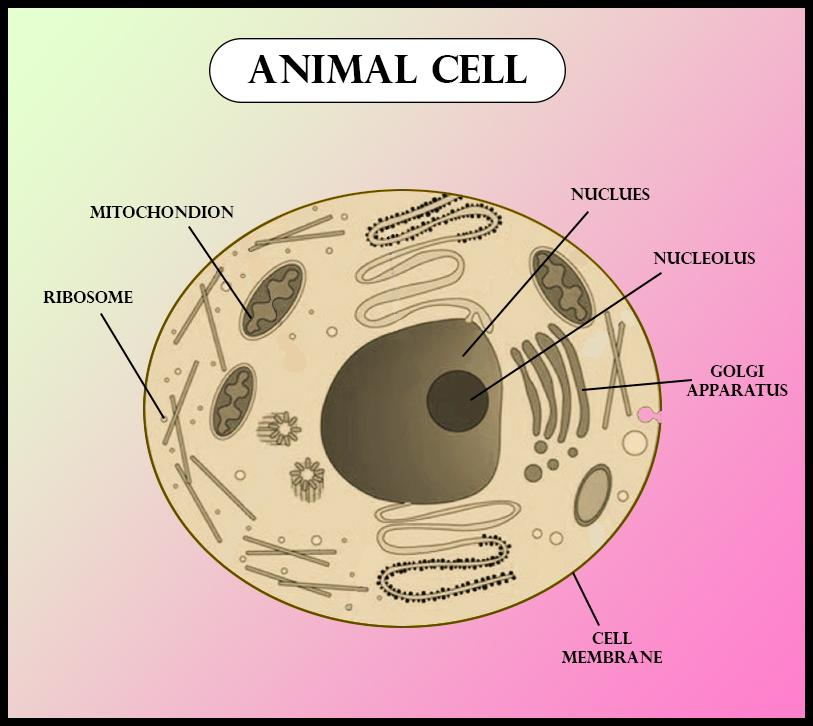
Which of the following is absent in an animal cell?
(a) Cytoplasm
(b) Nucleus
(c) Cell membrane
(d) Cell wall
Answer
574.5k+ views
Hint: This is tough and it provides rigidity, flexibility, structural support, and also protection to the plant cell. It is also present in bacteria and fungi but the composition is different.
Complete answer:
The cell wall is present in plant cells. They are very tough, flexible, and rigid layers that surround the cell. This rigidity allows plants to stand upright without the need for bones and grow as tall as possible. Animal cells don’t have cell walls because they do not need them. The cytoplasm is a thick solution mainly composed of water, salts, and proteins. It is enclosed by the cell membrane. It acts as a buffer and protects the genetic material and also the cell organelles from damage.
The nucleus may be a membrane-bound organelle that contains genetic material (DNA) of eukaryotic organisms. It is the largest organelle. inside the cell taking over a few tenths of the entire cell volume.
The cell membrane is also known as the plasma membrane or cytoplasmic membrane.
It is consists of a thin layer of amphipathic .


Additional Information:
-Cellular respiration begins in the cytoplasm with glycolysis.
-The nucleus controls all the activities that are performed by a cell, which include growth, intermediary metabolism, protein synthesis, and also reproduction (cell division)
-The cell membranes consist of a lipid bilayer, including cholesterols that sit between phospholipids to maintain their fluidity at various temperatures.
So, the correct answer is the’ cell wall’.
Note:
-Nucleus was discovered by Mr. Brown(Robert Brown) in 1831. With the help of grafting experiments on Acetabularia, Hammerling in 1953 proved that the nucleus is a storehouse of hereditary information.
-The cell wall is protective and it protects the cell membrane, a semipermeable membrane, next to the outermost layer of a plant cell. Its major function is to give the cell strength and structure and to filter molecules that pass in and out of the cell.
Complete answer:
The cell wall is present in plant cells. They are very tough, flexible, and rigid layers that surround the cell. This rigidity allows plants to stand upright without the need for bones and grow as tall as possible. Animal cells don’t have cell walls because they do not need them. The cytoplasm is a thick solution mainly composed of water, salts, and proteins. It is enclosed by the cell membrane. It acts as a buffer and protects the genetic material and also the cell organelles from damage.
The nucleus may be a membrane-bound organelle that contains genetic material (DNA) of eukaryotic organisms. It is the largest organelle. inside the cell taking over a few tenths of the entire cell volume.
The cell membrane is also known as the plasma membrane or cytoplasmic membrane.
It is consists of a thin layer of amphipathic .


Additional Information:
-Cellular respiration begins in the cytoplasm with glycolysis.
-The nucleus controls all the activities that are performed by a cell, which include growth, intermediary metabolism, protein synthesis, and also reproduction (cell division)
-The cell membranes consist of a lipid bilayer, including cholesterols that sit between phospholipids to maintain their fluidity at various temperatures.
So, the correct answer is the’ cell wall’.
Note:
-Nucleus was discovered by Mr. Brown(Robert Brown) in 1831. With the help of grafting experiments on Acetabularia, Hammerling in 1953 proved that the nucleus is a storehouse of hereditary information.
-The cell wall is protective and it protects the cell membrane, a semipermeable membrane, next to the outermost layer of a plant cell. Its major function is to give the cell strength and structure and to filter molecules that pass in and out of the cell.
Recently Updated Pages
Master Class 8 Maths: Engaging Questions & Answers for Success

Class 8 Question and Answer - Your Ultimate Solutions Guide

Master Class 7 Maths: Engaging Questions & Answers for Success

Class 7 Question and Answer - Your Ultimate Solutions Guide

Master Class 6 Maths: Engaging Questions & Answers for Success

Class 6 Question and Answer - Your Ultimate Solutions Guide

Trending doubts
What is meant by exothermic and endothermic reactions class 11 chemistry CBSE

Which animal has three hearts class 11 biology CBSE

10 examples of friction in our daily life

One Metric ton is equal to kg A 10000 B 1000 C 100 class 11 physics CBSE

1 Quintal is equal to a 110 kg b 10 kg c 100kg d 1000 class 11 physics CBSE

Difference Between Prokaryotic Cells and Eukaryotic Cells




